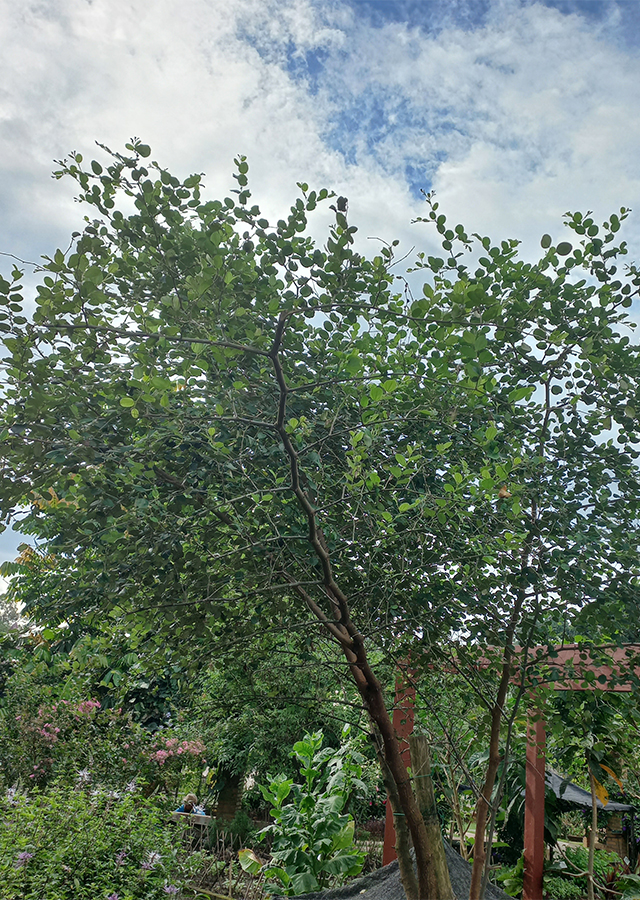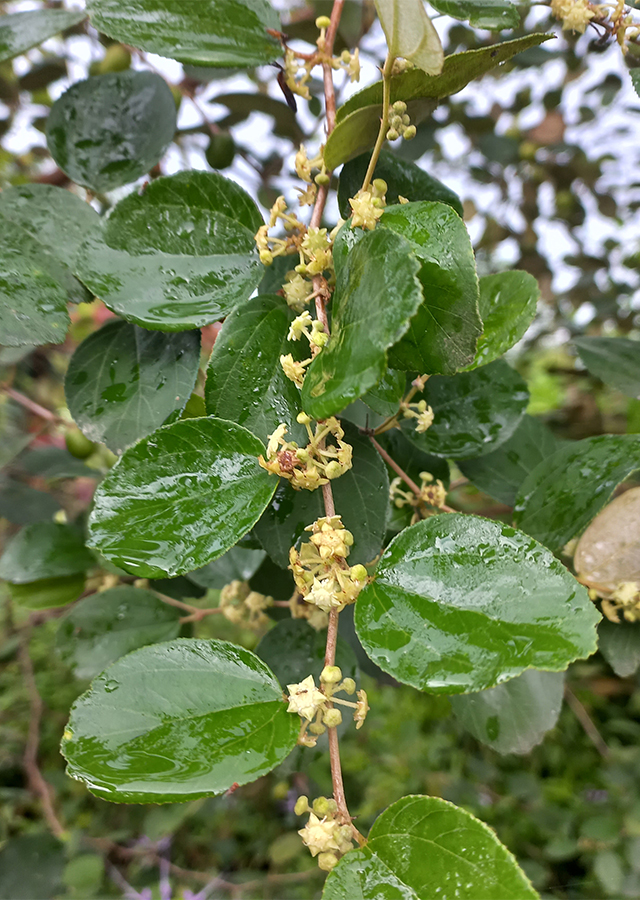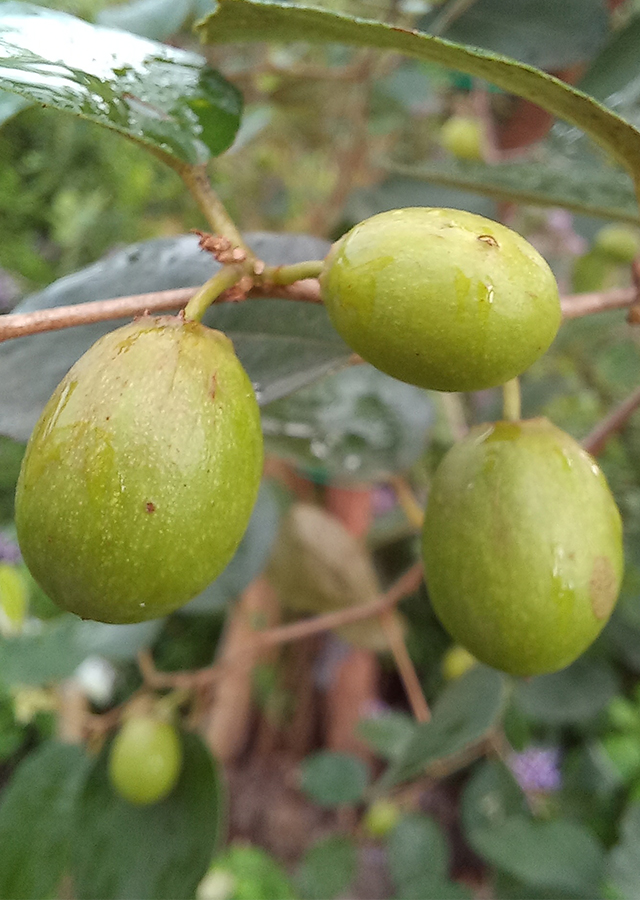Traditional Herbs from Ziziphus spina-christi
wound
- Take enough fresh Arabic bidara leaves and wash them until clean.
- Boil the leaves until soft then grind them\u00a0until they become a paste.
- Apply the paste to the injured skin.
diarrhea": ["Prepare enough fresh Arabian bidara leaves then wash them until clean.
What is Ziziphus spina-christi Looks like??



Parts of Ziziphus spina-christi that could be used
- Leaves", "Seeds", "Bark", "Fruit", "Roots
Ziziphus spina-christi Distribution
Arabian midwife is a fruit-producing plant that is thought to originate from warm and subtropical climates, including North Africa, Southern Europe, the Mediterranean, Australia, tropical America, South and East Asia, and the Middle East (Arabian Peninsula, Egypt, Syria, Palestine, Israel, Lebanon, Jordan, Iraq, Iran, Afghanistan, Pakistan). This plant has been introduced to northern and tropical parts of Africa, Madagascar, the Caribbean, Aruba, and Bonaire. This species is widely cultivated for its fruit and wood, and this plant is often used as animal feed, ornamental and shade plants, hedge plants, traditional medicinal plants, as well as as a sand dune stabilizer, because of its very deep taproot and spreading lateral roots. Arabian midwife produces fruit that can be eaten fresh or dried. The fruit can also be ground into flour or paste, and used as a spice or ingredient in making snacks. The wood can also be used to make high-quality charcoal, as well as being used to make spear shafts, poles, tool handles, tools, artistic woodwork, and cupboards. In its native region, this species is the most important plant for honey production, especially in the Middle East, because its flowers are a source of nectar for honeybees, where the honey produced has an excellent taste. Based on its use as a medicinal plant, arabic bidara has long been used in traditional Middle Eastern (especially Iranian) and African medicine since ancient times to treat various health problems. In the field of cosmetics, it is known that Arabic bidara has the potential to be a hair fertilizer because it contains chemical compounds which have the activity of fertilizing hair.Agroecology of Ziziphus spina-christi
Arabian midwife is a plant that is resistant to drought and high temperatures, usually found in dry areas, deserts, semi-deserts, valleys and savannas, with average annual rainfall from 50 mm to 500 mm and average annual temperatures in the range of 19� �28 �C. This plant prefers alluvial plains with deep soil, but is also able to grow in clay soil (where water is available) as well as in moderately salty soil, usually at altitudes between sea level and 2000 m above sea level. Based on ecological studies, it is reported that the largest stands are seen on alluvial plains with clay, sandy and silty loam, and are slightly alkaline (pH 7-8.2) and prefer a sunny position. This species can also tolerate a dry season of 8-10 months and can withstand waterlogging for up to 2 months.
Morphology of Ziziphus spina-christi
- The root has a very deep taproot and spreading lateral roots.
- Stems have paired thorns (one straight and the other curved) or sometimes thorns are absent, the bark is gray to brown, fissured, scaly, branches whitish to straw colored. leaf margins flat, glabrous on upper surface, finely pubescent below, lateral veins conspicuous.
- Flowers are small, yellow-green and hermaphroditic, sweetly scented. The corolla and petals are 5-lobed. The stamens are five in number. in dense clusters in the leaf axils.
- The fruit is round, with seeds, reddish yellow in color.
- The seeds are hard, cannot be separated and are surrounded by fruit flesh.
Cultivation of Ziziphus spina-christi
Plant propagation can be done generatively (seeds).
Ziziphus spina-christi, more details :
Chemical Content of Ziziphus spina-christiFlavonoids, saponins, polyphenols, riboflavin, tannins, sterols, triterpenoids, glycosides, essential oils (geranyl acetone, methyl hexadecanoate, methyl octadecanoate, farnesyl acetone, hexadecanol, and ethyl octadecanoate), alkaloids (ziziphine, jubanine, amphibian, alpha terpinol, and linalol).
Benefits of Ziziphus spina-christi
Treats headaches, stomach aches, measles, chest pain and respiratory problems, treats snake bites, reduces abscesses and boils, various surface wounds, reduces eye inflammation, relieves fever and toothache, rheumatism, fertilizes hair, sedatives, laxatives, abortion drugs , has anthelmintic and antidiarrheal properties, antioxidant, emollient (prevents dryness of the skin) and astringent, antihyperglycemic, antibacterial, antioxidant and antifungal.
Simplisia of Ziziphus spina-christi
- Prepare fresh Arabic bidara leaves, wash thoroughly with running water then drain.
- Dry in the sun or in an oven at\u00a040\u00b0C until the water content\u00a010%.
- Store in a clean, airtight container.
Another Facts for Ziziphus spina-christi :
Synonym of Ziziphus spina-christiZiziphus napeca Lam., Rhamnus spina-christi L., Girtanneria spina-christi (L.) Neck.
Habitus of Ziziphus spina-christi
Bush. Annual shrub, grows up to 15 m tall
Habitat of Ziziphus spina-christi
- Riverside", "Bushland", "Grassland", "Land
No comments:
Post a Comment